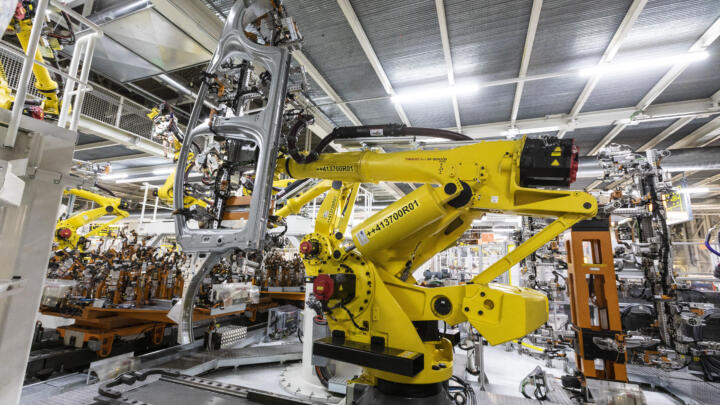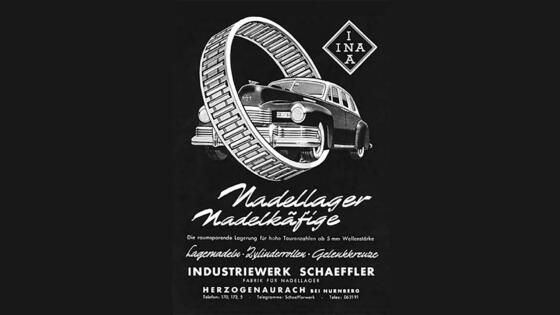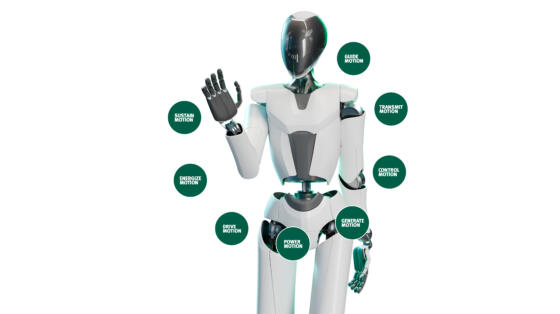
Little and larger helpers
The venerable university in Cambridge has produced more Nobel Prize winners than any other institution of higher education in the world. Whether a robot made in Cambridge will achieve such honors anytime soon remains to be seen. However, even at this juncture, robots are being taught a lot there. Most recently, scientists from Cambridge made headlines with a robot chef that had been taught to taste food. As well as in the research and development departments in industry, the evolution of robotics is driven at many universities around the globe. Scientists at ETH Zurich are working on the development of artificial skin that’s supposed to provide robots with a human-like sense of touch. The examples from Cambridge and Zurich alone illustrate the pace at which robotics has advanced into areas that just a few years ago were epitomes of utopian science fiction. Merely six decades passed between the development of the first hydraulic industrial robot and the current state.
Robots have been used for 60 years
George Devol had the first teachable robot patented in 1954, which laid the foundation for modern robotics. Two years later, Devol, together with Joseph Engelberger (subsequently dubbed the “father of the industrial robot”), founded the first robotics company. This innovation hotbed named Unimation was also the company that in 1961 sold the first hydraulic industrial robot to its customer General Motors, once again making the automotive industry a trendsetter just like it had previously been with the moving assembly line. The first robot processed injection-molded parts – so fast and with such precision that as early as in 1964 General Motors ordered 66 additional machines of this kind from Unimation. Other companies followed suit in robotics, both as manufacturers and users.

In 1973, KUKA Famulus, the world’s first six-axis robot, marked the next milestone achievement, ringing in a new era in automotive body manufacturing. In the following years, the evolution of industrial robots kept progressing, with electric motors replacing hydraulic control units, sensors enabling the performance of more sensitive work or robots autonomously moving around on the factory floor.
Today, manufacturing operations are inconceivable without robots. In 2021, more than three million industrial robots were in use worldwide, joined each year by some 400,000 new ones, according to the International Federation of Robotics (IFR), whereas statistics for 2010 only reflected 120,000. The market is booming.
“The use of robots is rapidly gaining momentum in both traditional and new industries,” says IFR President Milton Guerry. “More and more companies are recognizing the benefits that robotics and automation can bring to their business models.” Along the same lines, Ralf Moseberg, Senior Vice President Industrial Automation at Schaeffler, emphasizes that “there’s an enormous worldwide need to catch up in the areas of robotics and automation. The huge demand meets with an offering that’s becoming better and better. For us as a supplier, the technological development makes solutions possible today that just a few years ago were not feasible at all or could be realized only at clearly higher costs. Robots are becoming increasingly flexible, fast, precise, efficient and therefore affordable also for smaller to medium-sized companies.”
1 in 10
households in Europe already uses a robot. Robotic lawn mowers were the first robots for domestic use. In 1998, manufacturer Husqvarna presented the first model that not only mowed autonomously but also traveled back to its charging station independently. Robotic vacuum cleaners achieved their breakthrough in 2001 thanks to iRobot Roomba. Floor mopping and window cleaning robots followed. In 2021, 6.7 billion U.S. dollars were spent on 31.2 million domestic robots. In 2023, that amount is expected to increase to 10 billion. The calculated time savings for household chores amount to up to 14 hours per week.
Source: International Federation of Robotics
IFR statistics underpin the Schaeffler expert’s view that there’s a huge global need to catch up. In the pre-pandemic year of 2019, there were 2,743 industrial robots per 10,000 employees in South Korea’s car industry. That was a top ratio worldwide because the global automotive industry average was just 722. Across industries, the ratio was merely 113. For the compact collaborative robots called cobots for short, the ratio was even as low as 4 per 10,000 human colleagues.
Simplified teaching
There’s an important aspect assisting in the race to catch up, says Moseberg: “Both industrial robots and the more compact cobots are increasingly easier to program and implement.” Especially in the case of large industrial robots working in shielded settings that are separated from human workers to ensure safety, the implementation costs proved to be a major impediment to their widespread use. Unsurprisingly, especially small and medium-size companies don’t embrace the prospect of incurring implementation costs amounting to two or three times the robot’s price.

Schaeffler is among the companies pursuing an intriguing approach to lowering that hurdle. “We emphasize simplified installation and startup operation,” explains automation expert Moseberg. “Using the so-called teach-in function, cobots learn movements by rehearsing processes that are guided by hand. The sensors implemented in our gearboxes assist in the required data acquisition. That clearly simplifies programming.”
Intuitive user surfaces operating with symbols are in line with the trend toward simplified implementation just like the development of complete hardware and software eco-systems that we’re familiar with from smartphones. From an app store, customers can download preconfigured applications for simple and frequently desired uses enabling easy incorporation of grippers, sensors and control units.

“Cobots have clearly greater freedom of motion than classic industrial robots, which opens up all-new fields of application.”
Ralf Moseberg, Senior Vice President Industrial Automation bei Schaeffler
New fields of work for robots
There are other factors besides simplified implementation and operation that are conducive to accelerating the wide-spread use of the nimble machines. Labor shortage, for instance, is a major aspect motivating the deployment of robots. Even sectors in which robots have so far failed to get an “arm” in the door are now investigating automation out of sheer necessity. They primarily include companies that, due to small volumes or complex processes, have so far had to rely on manual work. Likewise, the restaurant business, the retail trade as well as logistics and farming are now investigating the use of robotics for the first time.
In its current trend report, the IFR additionally found that shifts in consumer behavior toward customized products and deliveries as well as online retail in the consumer goods sector that has received an additional boost by the pandemic have led to a downright boom in demand for robots. Worldwide, the paper says, thousands of robots are being used in this segment, which was inconceivable just five years ago. “At Schaeffler, we’re also seeing a massive increase in demand for robots as well as for cobots in non-industrial sectors such as healthcare, food and logistics,” confirms Ralf Moseberg.

Classic suppliers of large industrial robots like Fanuc, ABB, KUKA, Yaskawa or Siasun want to benefit from the recent yet unmissable trend as well and are pushing into this growth market. KUKA’s CEO Peter Mohnen, tongue-in-cheek, put it this way: “We’re not the first to join the party – but the party hasn’t really started yet.”
Schaeffler’s expert Moseberg is a cobot fan, too. “Cobots interact directly with humans and safety cages are no longer needed,” he explains. “As a result, their freedom of motion is clearly higher than that of conventional industrial robots, which opens up all-new fields of application. Obviously, these new fields present completely different challenges than mass production.”
That calls for innovative technical solutions. “For example, in settings where medical robots are used, healthcare staff, patients and robots come into very close contact with each other and measuring even the smallest forces, for instance due to touch, is essential,” Moseberg continues. “For this purpose, we have incorporated torque sensors into strain wave gears that are able to measure such forces with very high precision while maintaining high control accuracy.”
Moseberg expects yet another development: “Various technical areas are going to continue growing together. The combination of AGVs (automated guided vehicles) and cobots, in other words robots for versatile uses that are installed on autonomously traveling platforms and independently proceed to where they’re needed, is a case in point.” Digital connectivity is another area in which value is added due to interdisciplinarity. While in use, cobots collect data for forwarding to IT systems in real time. These systems process the information immediately and feed it back to the factory floor, which enables continuous optimization of the production process. For Moseberg, this “sustainable engineering” is a powerful lever for saving energy and raw materials.
The steadily increasing requirement profiles for robots also include resistance against harsh conditions. “After all, cobots and robots are intended to replace humans especially in activities that are particularly strenuous for human workers,” Moseberg explains, “for instance, in settings involving very high or low temperatures or handling of heavy loads. The question is, where do such working conditions exist and in which places can relief be achieved? We’re going to take a closer look at such areas. One of the products we offer to address those needs are XZU bearings enabling lightweight robots to be loaded with even higher weights without suffering higher wear of the gearboxes.”
Fitness program for classic industrial robots
In parallel with the advance of cobots, the evolution of the classic industrial robot, which already has a payload of several tons and range of up to five meters (16 feet) today, continues. “Higher precision, a smaller footprint, higher efficiency and longer maintenance intervals are the areas here that we’re obviously working on as well,” says Schaeffler’s expert Moseberg.
A departure from limiting robots to performing predefined tasks toward greater flexibility as a prerequisite for companies to accelerate their response to market changes is another field on which developers of classic industrial robots are focused. In addition to simplified programming, a modular robot design is a key enabler of diverse use cases.
In robotics expert Moseberg’s view, there’s no doubt about it: “For me, a ‘factory for tomorrow’ is unthinkable without robotics deployment proceeding in both directions, that is cobots as well as the larger industrial robots, because there are use cases for both types of robots in modern manufacturing operations.”
Robotic innovations by Schaeffler
At the 2022 Hanover Fair, Schaeffler’s Industrial division unveiled several new developments in the field of automation. For lightweight robots and cobots, the company presented new main bearings, gearboxes and fully integrated sensor systems. “For instance, with our solutions package, cobots can be up to 50 percent faster or haul respectively heavier loads. For sensitivity, we offer an innovative concept: our sensor-based precision strain wave gears. As a result, it will be possible to develop other fields of application,” explains Ralf Moseberg, Senior Vice President Industrial Automation at Schaeffler. The technology group has the requisite production capacities and quality management for medium and larger volume production and everything else that’s needed to cover the future demand for system components for lightweight robots.

For industrial robots, Schaeffler presented a portfolio of precision planetary gear units of the PCS series. Compared to the market standard, it’s characterized by ten times lower torsional backlash and three times longer service life. In addition, the precision planetary gear units feature wear compensation that keeps the units’ extremely low torsional backlash at constant levels. “Such major development leaps are very rare and an opportunity for industrial robotics to overcome previous barriers,” says Moseberg. To strategically strengthen the company in this area, Schaeffler acquired Melior Motion GmbH (now Schaeffler Ultra Precision Drives GmbH) at the beginning of the year. The manufacturer of precision gearboxes for industrial robots is one of the innovation drivers in this field and with its products enables high-precision positioning and repeat accuracy of robots combined with particularly long lifecycles. For Schaeffler, robotics as a whole, including large industrial robots, is a field with major growth potential.




